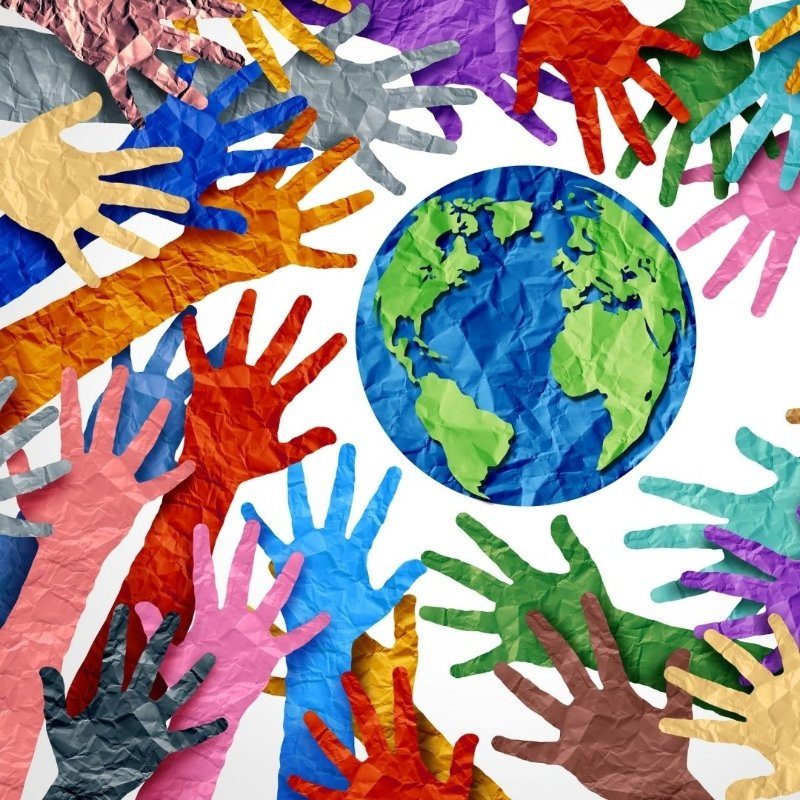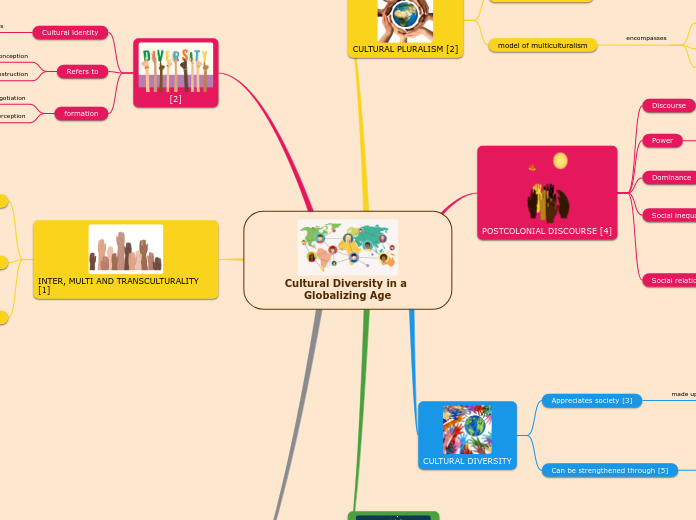
Cultural Diversity in a Globalizing Age
![CULTURAL PLURALISM [2]](https://psychology.iresearchnet.com/wp-content/uploads/2016/01/Cultural-Pluralism.jpg)
CULTURAL PLURALISM [2]
a socio-political strategy
targeted at new arrivers
to easily refer to the concept of
how cultures interact in a certain society
model of multiculturalism
encompasses
the ‘vertical’ aspect of the mosaic metaphor
the government’s involvement in a society’s cultural and ethnic issues
based groups
![POSTCOLONIAL DISCOURSE [4]](https://blogs.iadb.org/caribbean-dev-trends/wp-content/uploads/sites/34/2014/05/Hands_reachn.svg_.png)
POSTCOLONIAL DISCOURSE [4]
Discourse
Culture
Identity
Curriculum [2] (McCarthy et al., 2003).
Power
Limitations of monological and homogenizing approaches [2] (McCarthy et al., 2003)
Dominance
Associations in the conceptualization of culture [2] (McCarthy et al., 2003)
Social inequality
Limitations of monological and homogenizing approaches [2] (McCarthy et al., 2003)
Social relations
Literature
Painting
Music
prophetic, anticipatory, and instructive [2] (McCarthy et al., 2003).
Pedagogy should be organized around the thesis of the constructed nature of all knowledge. [2] (McCarthy et al., 2003).

CULTURAL DIVERSITY
Appreciates society [3]
made up of
different groups with different
Interests
Skills
Talents
Needs
Beliefs
Sexual orientations
Can be strengthened through [5]
globalization
by providing the
means and wherewithal to support cultural groups
to make a difference in society
![GLOBALIZATION [5]](https://rangamini.files.wordpress.com/2021/02/globalization-1024x581-1.png?w=1024)
GLOBALIZATION [5]
internationalization
growing interconnectedness
interdependence of
People
Institutions
![[2]](https://cdn1.mindomo.com/resources/img/editor/imagesources/loading-image.svg)
[2]
Cultural identity
Categorization of a person by others
Refers to
Self-conception
Self-construction
formation
Social influences negotiation
Self-perception
![INTER, MULTI AND TRANSCULTURALITY [1]](https://www.nih.gov/sites/default/files/styles/featured_media_breakpoint-medium/public/institutes/clear-communication/clear-comm-cultural-respect.jpg?itok=nJFkEBWF×tamp=1625658657)
INTER, MULTI AND TRANSCULTURALITY [1]
Interculturality
Promote
Diversity
Recognition
Comprehension
Apprenticeship
Multiculturalism
Promotes
Cultural coexistences
Not cultural exchange
Not social transformation
Transculturality
Construct bridges
Not stereotypes
Cross social frontiers
New forms of cultures
